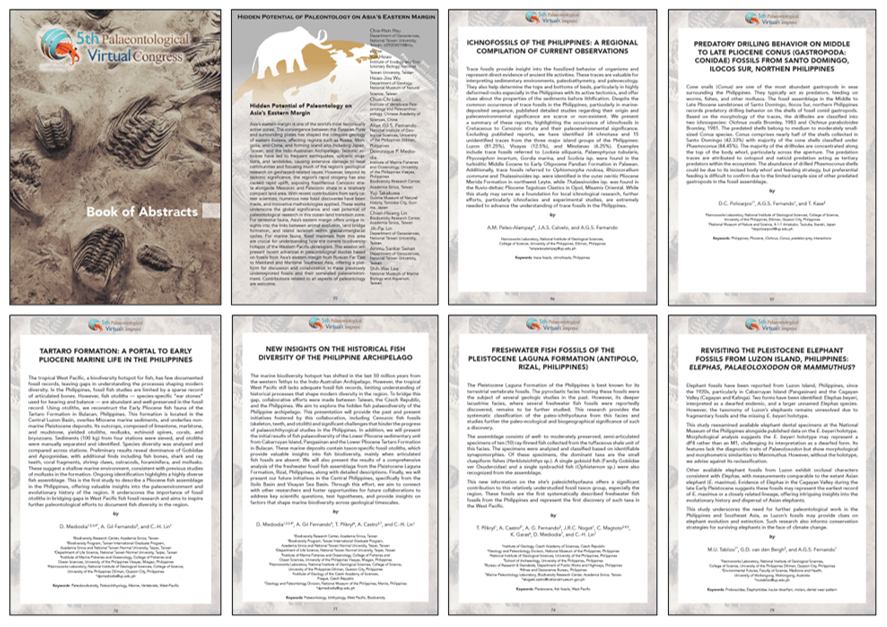The 5th edition of the Palaeontological Virtual Congress (PVC) was held from March 10–25, 2025. As the first fully online international palaeontology conference, the 2025 event brought together over 500 scientists from 54 countries. Members of the Nannoworks Laboratory actively participated, presenting findings from their ongoing research and theses in two thematic sessions.
In the session titled “Ichnology: Vertebrate and Invertebrate Paleontology,” Joeven Austine S. Calvelo shared a summary of ichnofossil occurrences in the Philippines, while David C. Policarpio presented his study on predatory drilling behavior in fossil Conus specimens from Ilocos Sur.
In the “Hidden Potential of Paleontology on Asia’s Eastern Margin” session, four papers were presented by Nannoworks members and collaborators. Dominique P. Mediodia (National Taiwan Normal University and UP Visayas) provided an overview of Pliocene fish diversity in the Philippines through otoliths (fish ear bones) from the Tartaro Formation in Bulacan. Dominique also offered new insights into historical fish diversity, emphasizing the importance of collaboration to address key scientific questions and understand the factors shaping marine biodiversity over geological timescales.
Abigael L. Castro, a Nannoworks member from the National Museum of the Philippines, discussed freshwater fish fossils from the Pleistocene Laguna Formation in Rizal Province. This research, co-authored by other Nannoworks members, was recently published in the Swiss Journal of Paleontology. Meanwhile, Meyrick U. Tablizo presented findings from one of his MS thesis chapters on Elephas, reexamining elephant dental specimens from Luzon and reassessing their taxonomic classification.

The book of abstracts of the 5th Paleontological Virtual Congress, co-organized by Dr. Allan Gil S. Fernando, and the different accepted abstracts presented in the symposium.
The next edition of the PVC is tentatively scheduled for 2027, and Nannoworks Laboratory members are already looking forward to sharing future advancements in Philippine paleontological research on this global virtual stage.